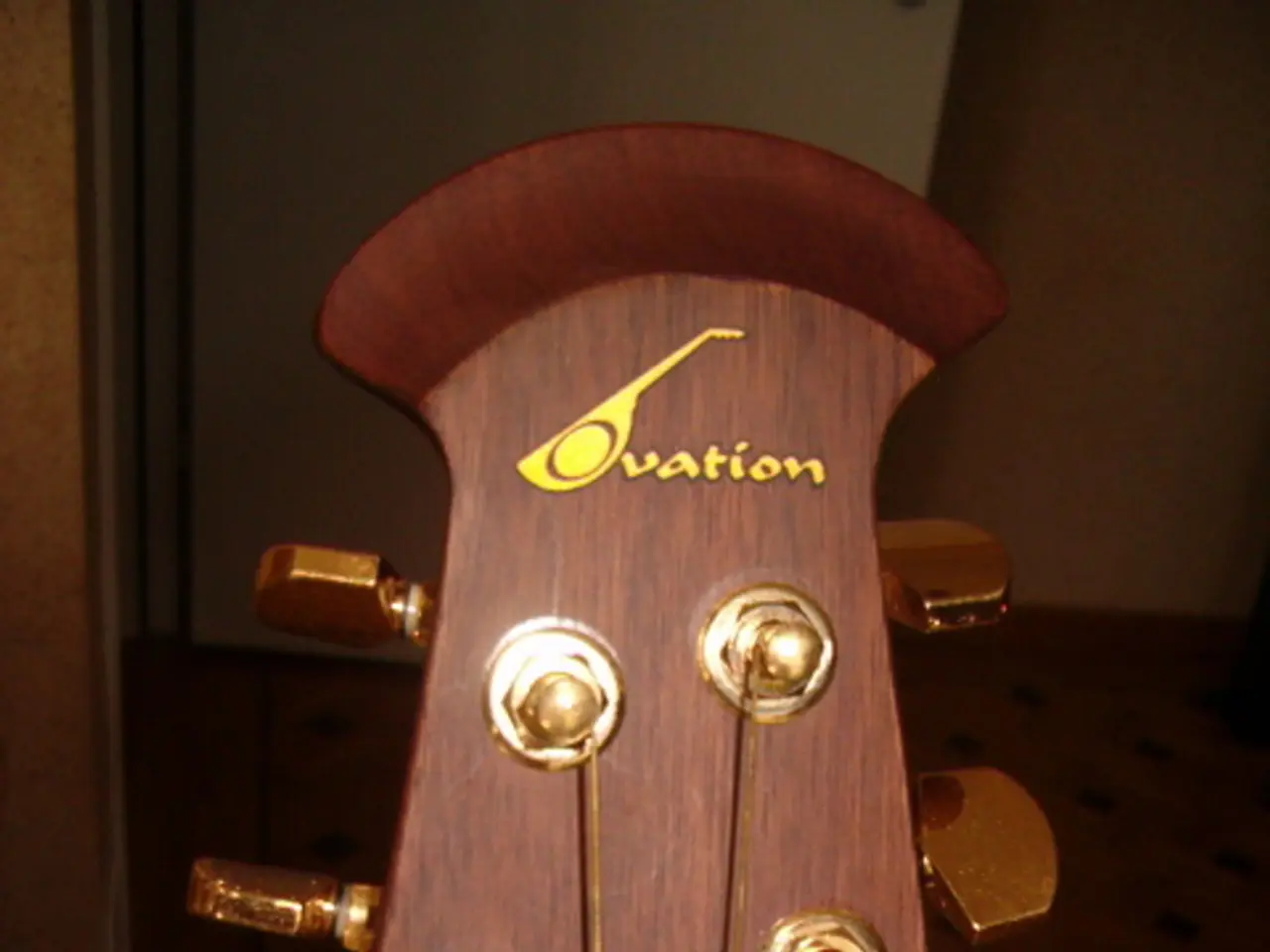Exploring the CAGED System: Mastering Chord Progressions Across the Entire Fretboard on the Guitar
==============================================================================
In the realm of guitar playing, mastering the fretboard can sometimes feel like a daunting task. However, the CAGED system offers a solution to this challenge by providing a simple and effective method to understand the layout of the guitar neck.
The CAGED system is a mnemonic device that simplifies the guitar fretboard by linking five basic open chord shapes—C, A, G, E, and D—across the neck. This method helps guitarists find chords, scales, and arpeggios more easily, allowing them to play the same chord or scale shapes in different positions and keys.
The system's usage includes navigating the fretboard by recognizing how chords and notes interconnect using these five shapes, which serve as a blueprint for the guitar neck. This enables guitarists to play chords all over the neck without relying solely on barre chords, thus enabling more comfortable and versatile chord voicings and transitions.
Moreover, the CAGED system improves soloing and lead playing through concepts like chord tone soloing, where players target chord notes within scales to make solos sound more connected to the underlying harmony. This technique adds a level of cohesion and harmony to a guitarist's soloing, making it more melodic and expressive.
Enhancing chord progressions is another benefit of the CAGED system. By substituting standard open chords with different CAGED shapes, guitarists can add variety and interest to rhythm guitar parts, creating more dynamic and engaging music.
The starting point for the CAGED system is the C form barre chord and its corresponding major scale that surrounds it. The G scale pattern uses one finger per fret until the third string, which shifts back one fret (to the 4th fret), and then resumes the 5th position for the remainder. The A form scale pattern has a highlighted A form barre chord shape.
The E scale pattern is easy to play with one finger per fret and no position shifts required. The D scale pattern uses one finger per fret in the 10th position, except for the D and G strings, which shift back to the 9th fret. The open E chord and 'E form' barre chord are the easiest to play among the CAGED barre chords.
Each of the five CAGED scale patterns is framed by a major scale of the same key, ensuring comprehensive coverage of the fretboard logically and systematically. These five chord shapes are paired with five unique major scale patterns, providing guitarists with a comprehensive understanding of the fretboard.
In conclusion, the CAGED system is a foundational tool for both rhythm and lead guitarists to visualize and utilize the fretboard efficiently. By understanding this system, guitarists can switch keys, play melodies, and execute chord changes smoothly, making their playing more versatile and expressive[1][2][3][4][5].
[1] "The CAGED System: A Complete Guide to Guitar Fretboard Mastery." Guitar Tricks. https://www.guitartricks.com/tutorial/the-caged-system-a-complete-guide-to-guitar-fretboard-mastery [2] "The CAGED System Explained." Justin Guitar. https://www.justinguitar.com/en/lesson/the-caged-system-explained [3] "The CAGED System: A Comprehensive Guide." Songsterr. https://www.songsterr.com/lessons/the-caged-system-a-comprehensive-guide [4] "The CAGED System: A Revolutionary Approach to Guitar Playing." Ultimate Guitar. https://www.ultimate-guitar.com/articles/lessons/the_caged_system_a_revolutionary_approach_to_guitar_playing [5] "The CAGED System: Mastering the Guitar Fretboard." Music Radar. https://www.musicradar.com/news/guitars/the-caged-system-mastering-the-guitar-fretboard-335350
Read also:
- Postpartum Period and Gestational Diabetes: Does it Persist?
- Controlled spree of Legionnaires' disease among Harlem residents ceased, city health authorities confirm; however, locals push for increased openness and information disclosure
- Transform City for the Better
- Prostate Cancer Examination Guidelines, Outcomes, and Financial Aspects




